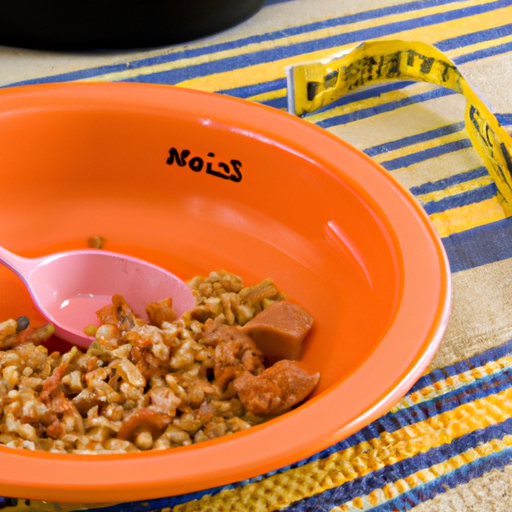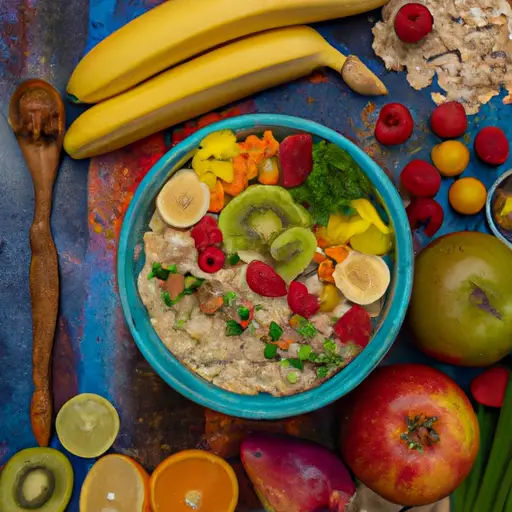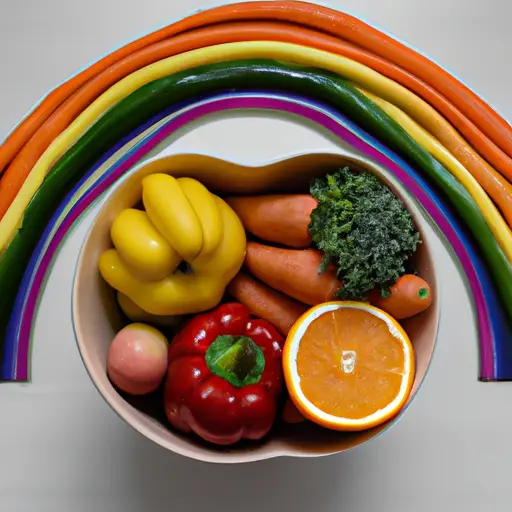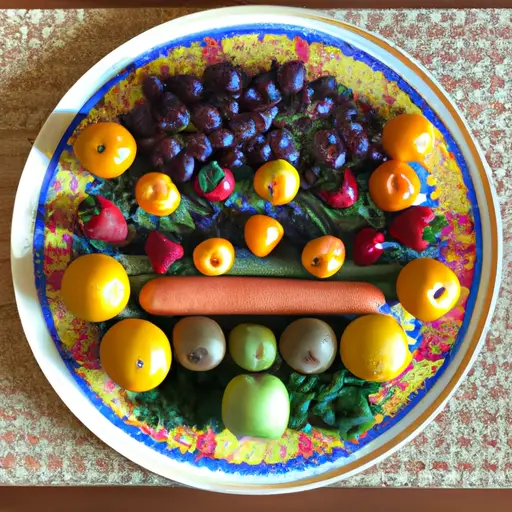The Benefits of Portion Control for Healthy Eating
Portion Control Is Key: Control Your Food Intake for a Healthier Life
Hey there! Are you looking for a way to improve your eating habits and lead a healthier life? Look no further than portion control!
Portion control is simply the act of monitoring and controlling the amount of food you eat during meals and snack times. It’s a crucial part of healthy eating because, let’s be honest, most of us tend to eat way more than we actually need!
By practicing portion control, you can limit your caloric intake, reduce the risk of overeating and weight gain, and keep your body fueled with the nutrients it needs to function at its best. Trust me, your body will thank you for it!
Exploring the Various Ways to Monitor Your Portions for Healthy Eating
When it comes to controlling your portion size, there isn’t just one correct way to do it. You can try different tactics to see what works best for you, based on your lifestyle and preferences. Below are two commonly followed methods of portion control:
Visualizing Portions: This method involves using your hand, fist or other visual aids to eyeball your portion sizes. For example, the size of your palm or your closed fist can be used to gauge how much protein you should consume. Another helpful tip is to use small plates and bowls, which can trick your brain into thinking you’re eating a more significant portion while still limiting your intake.
Measuring Portions: This method involves weighing or measuring your food to ensure accurate portion sizes. This can be the most precise method when it comes to determining serving sizes. You can use measuring cups, spoons, and kitchen scales to measure food items.
Deciding which approach to use depends on your personal preference and the situation you’re in. For instance, it might be easier to measure portions when cooking at home, while visualizing portions could be a better choice when dining out. Regardless of the chosen method, being aware of portions and sticking to your limits can help you maintain a healthy weight and reduce the risk of chronic conditions such as heart disease or diabetes.
Goals and Guidelines: The Key to Successful Portion Control
When it comes to portion control, setting realistic goals and establishing guidelines for yourself can make all the difference in maintaining a healthy diet. It’s important to understand that portion control is not about deprivation or strict rules, but rather about finding a balance and enjoying food in moderation.
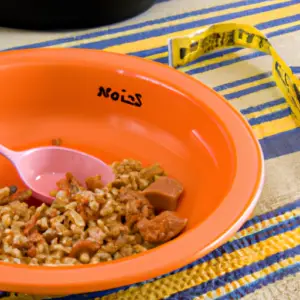
Setting realistic goals is the first step in achieving success with portion control. This means creating achievable objectives that are specific, measurable, and realistic. For example, setting a goal to reduce portion sizes by 25% can be more effective than a vague goal to “eat healthier.” However, it’s important to make sure that your goals are attainable and not overly restrictive, as this can lead to frustration and ultimately to abandoning the effort.
Once you have set your goals, it’s time to establish guidelines for portion control. This can include using tools such as measuring cups or food scales to portion out food, or simply visualizing portion sizes by comparing them to everyday objects like a deck of cards for meat or a tennis ball for fruit. Another effective method is to fill half of your plate with non-starchy vegetables and the other half with protein and grains.
It’s important to remember not to obsess over portion control, but rather to enjoy food in moderation. Allowing yourself the occasional indulgence can actually help maintain a healthy diet in the long run by preventing feelings of deprivation and discouragement. Finding a healthy balance and sticking to achievable goals and guidelines are the keys to successful portion control and, ultimately, a healthier lifestyle.
Implementing Portion Control Strategies: How I Keep Myself on Track
Now that I have established my goals and guidelines for portion control, it’s time to put those plans into action. Here are some strategies that work for me:
Preparing Meals Ahead of Time
One of the habits that have helped me the most is preparing my meals ahead of time. I cook several portions of healthy meals on Sundays, for example, and then portion them out for the week so I can quickly grab them and go when I’m in a rush. This not only saves me time during the week, but it also ensures that I have healthy, portion-controlled options readily available.
Making Use of Portion-Controlled Containers
Another tool that I use to keep myself on track is portion-controlled containers. These containers are labeled with measurements, so I know exactly how much I’m eating. It’s an easy way to manage portions and stay accountable without having to weigh or measure every single food item.
Tracking My Progress
I track my progress by keeping a food diary or using a food-tracking app. This helps me to see where I may be slipping up and provides a visual reminder of my portion sizes. It’s also a great way to stay motivated and celebrate small victories along the way.
Treating Myself in Moderation
Finally, it’s important for me to remember that moderation is key. I still enjoy a slice of pizza or a scoop of ice cream every now and then, but I make sure to keep it in moderation and account for it in my portion control plan. This helps me stay on track without feeling deprived or completely cutting out my favorite foods.
By implementing these portion control strategies, I have been able to maintain a healthy and balanced diet without feeling overwhelmed. It’s all about finding what works best for you and sticking with it!
5. A Heartfelt Reminder on the Essentials of Portion Control
Now that you’ve learned about the many benefits of portion control, it’s time to start practicing it in your daily life. Remember, small steps lead to great changes in the long run, so don’t get discouraged if you don’t see immediate results.
I highly recommend that you aim for a more holistic approach to your eating habits rather than focusing entirely on food restrictions or calorie counting. Portion control is all about balance and mindfulness, which means savoring every bite and listening to your body’s natural signals of fullness and hunger.
In addition to visualizing and measuring your food portions, take the time to establish realistic goals and guidelines that work for you. Accept that slip-ups and setbacks are normal, and be open to trying new strategies like preparing meals ahead of time or using portion-controlled containers.
Ultimately, remember that portion control is not just a one-time affair but an ongoing process of self-care and self-improvement. Let it become a part of your life, and you’ll reap the rewards of better health, improved energy, and a happier mindset.
If you want more tips and advice on how to implement portion control in your life, be sure to check out my favorite article on the importance of portion control in food, available at lovelylifeofleah.com. Happy eating!
